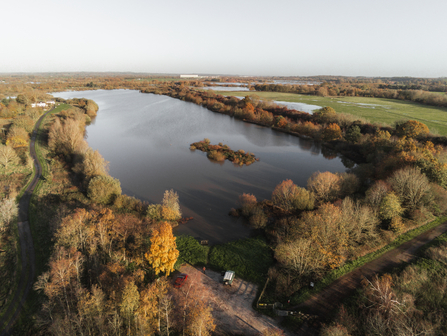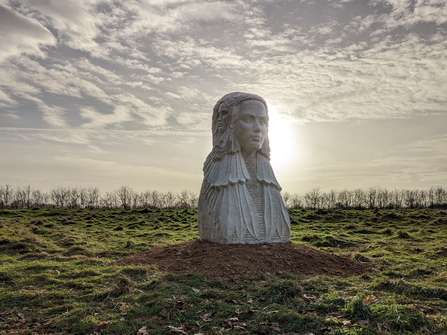We are really pleased to bring Trisentona to life. The sculpture will enable visitors to Croxall Lakes to learn more about the site’s history and deepen their connection with the landscape around them.Transforming the Trent Valley
River goddess statue unveiled to celebrate site’s history
The site, near Alrewas, marks the confluence of three rivers; the Mease, Tame and Trent. The prehistoric people of Britain believed that rivers were a representation of the feminine divine and that each river was a manifestation of a goddess. The goddess at this spiritual place was known as Trisentona, the thrice beloved, which was shortened over the years to Trent.
TTTV is a partnership project of 19 organisations working together to restore and enhance the natural and cultural heritage of the Trent Valley, with Staffordshire Wildlife Trust at the helm.
Jeff Sim, Staffordshire Wildlife Trust’s Reserves Manager, said: “We thank the sculptors Miranda Wakeman and Geraint Lloyd for their stunning interpretation of Trisentona. This addition provides an intriguing focal point at the Croxall Lakes nature reserve, which features a 26 acre lake that attracts large numbers of wildfowl and wading birds such as teal and oyster catcher."

Tom John Ellis
The pre-Christian people of Britain believed in genius loci or the spirit of place. Trees, springs, mountains and rivers were represented by a spirit, a god or goddess. These three rivers gave birth to the triple goddess, with the creation of the Catholme Ceremonial Complex as the celebration of that birthplace. The river then became a manifestation of the goddess, and the goddess a representation of the river.
Dr Mark Knight, Cultural Heritage Officer for TTTV, said: “We are really pleased to bring Trisentona to life. The sculpture will enable visitors to Croxall Lakes to learn more about the site’s history and deepen their connection with the landscape around them.”

Trisentona goddess statue at Croxall Lakes by TTTV
An archaeological team led by Professor Henry Chapman of the University of Birmingham unearthed an incredible series of finds at nearby Catholme, also near to Alrewas. A ritual landscape based around a series of ceremonial monuments focussed on the confluence of three rivers, the Trent, Tame and Mease, was discovered to have existed between about 3,000 BCE and 1,500-1,000 BCE. The importance and sanctity of this unusual triple confluence was of utmost significance. Starting in the late Neolithic, these monuments may have stood in the landscape for well over 1,500 years and influenced the building and placement of later Bronze Age burial mounds and other landscape features. This ceremonial complex was of national significance, despite there being nothing visible above ground now.
For more information on the installation visit: www.thetrentvalley.org.uk/projects/tttv-heritage/birthplace-of-a-goddess/
For more information about Transforming the Trent Valley’s work visit: www.thetrentvalley.org.uk
